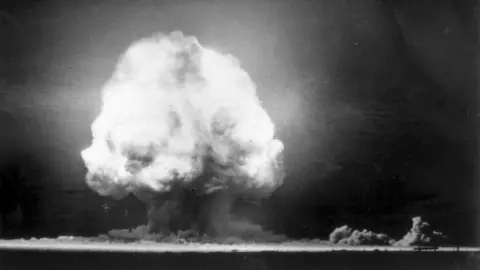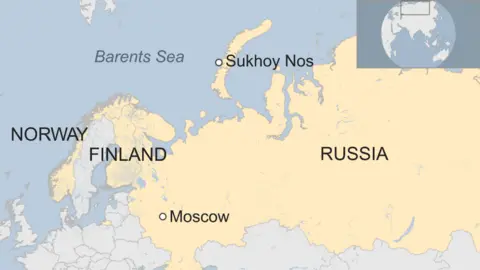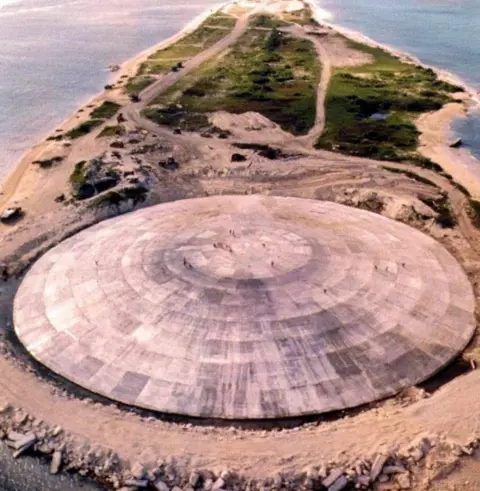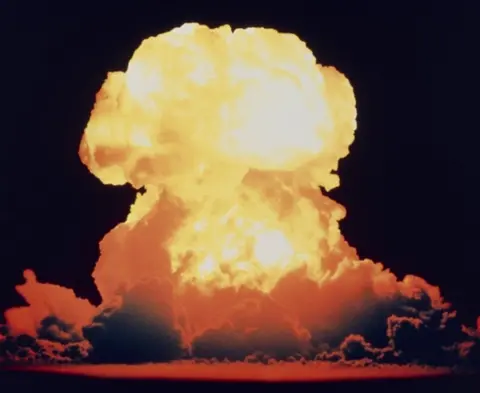The most powerful nuclear blasts ever
 AFP
AFPThe apparent hydrogen bomb that North Korea is believed to have detonated underground on Sunday was a massive explosion.
Some estimates put it at 100 kilotons, which would be five times more powerful than Fat Man, the bomb dropped on Nagasaki by the US in 1945 and which killed 70,000 people instantly.
But it still pales in comparison to the largest man-made explosion ever on Earth - the Soviet Union's Tsar Bomba - King of Bombs - detonated in 1961 in the height of the nuclear arms race.
That hydrogen bomb unleashed a staggering power of 50,000 kilotons, or 50 megatons.
Reports at the time said the Tsar Bomba destroyed all buildings within 55km (35 miles) of the test site at Sukhoy Nos in the Arctic Novaya Zemlya archipelago.

Buildings were destroyed and windows broken for hundreds of kilometres all around. There were reports of broken windows in Finland and Norway, and the shockwave generated by the blast travelled around the planet three times.
It was a physically an enormous bomb, weighing 27 tonnes and about 8m in length, meaning it was entirely impractical as a genuine weapon. It was dropped by parachute, from a manned plane. The crew survived, though that had been far from a certainty.
It later emerged that the bomb could have been even more powerful - it was originally designed to generate a 100-megaton blast, but was scaled back to prevent the nuclear fallout affecting the wider population.
The Soviet Union carried out several other tests of immensely powerful nuclear weapons in the 1960s in Novaya Zemlya, which had a yield of 20-24 megatons.
But more than half of the more than 2,000 deliberate nuclear explosions since the dawn of the nuclear weapons age in July 1945 have been by the US, still the only country to use nuclear weapons in war.
In November 1952, the US blew up the world's first hydrogen bomb - a far more powerful nuclear device than atomic bombs. Codenamed Ivy Mike, the 82 tonne-weapon was detonated in the Marshall Islands in the Pacific Ocean.
It had an explosive power of 10 megatons.
 AFP
AFPArchive news footage of the blast shows observers watching from military boats about 50km away.
Harold Agnew, a physicist and leading figure in US nuclear programme, was on board one of the boats, and later said: "Something I will never forget was the heat. Not the blast... the heat just kept coming, just kept coming on and on. It's really quite a terrifying experience."
The blast cloud was about 50km high and 100km wide, and completely destroyed the island of Elugelab.
 AFP
AFPBut the biggest ever nuclear device detonated by the US was Castle Bravo, in 1954 at Bikini Atoll in the Marshall Islands.
Castle Bravo is mostly remembered for its unintended after effects. It was expected to have a yield of about 5,000 kilotons, but the scientists had miscalculated and the eventual yield was three times that.
The resulting mushroom cloud was more than four miles wide and radiation spread over 11,000 sq km.
 Science Photo Library
Science Photo LibraryPeople nearby had been evacuated - many never to return - but the effects were wider than expected. In the days afterwards, hundreds more people across neighbouring atolls were exposed to nuclear fallout, as well as the crew of a Japanese fishing boat in the area, leading to radiation sickness.
In 1997, the International Atomic Energy Agency said the Bikini Atoll should "should not be permanently resettled under the present radiological conditions".
